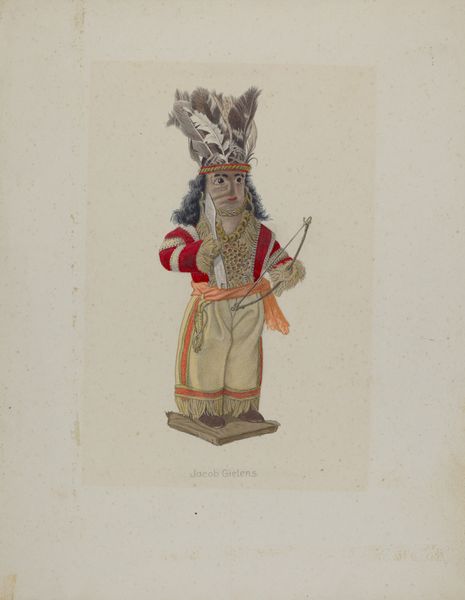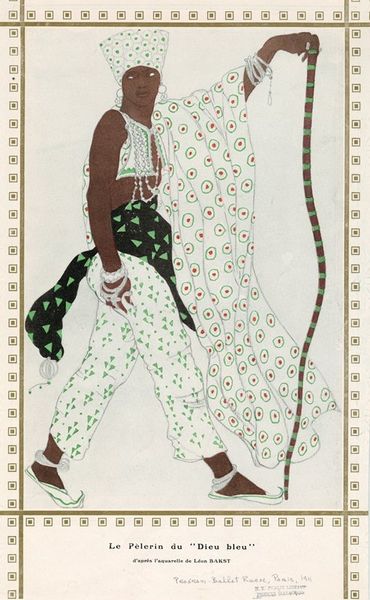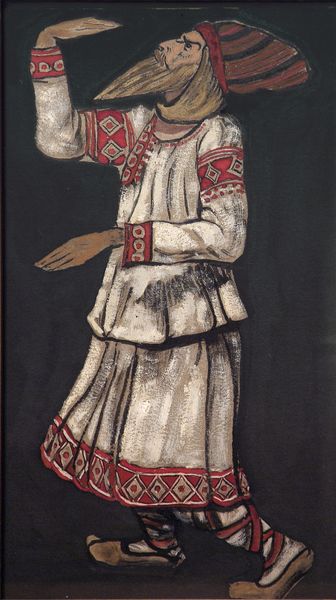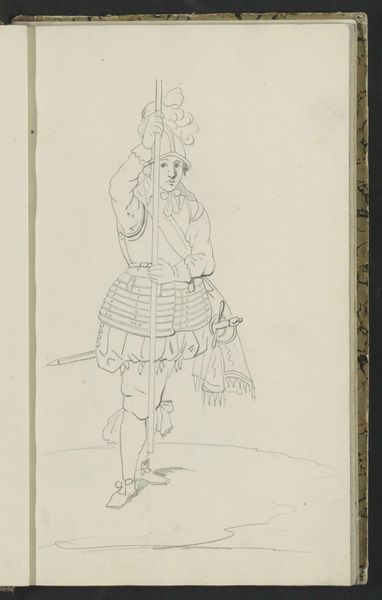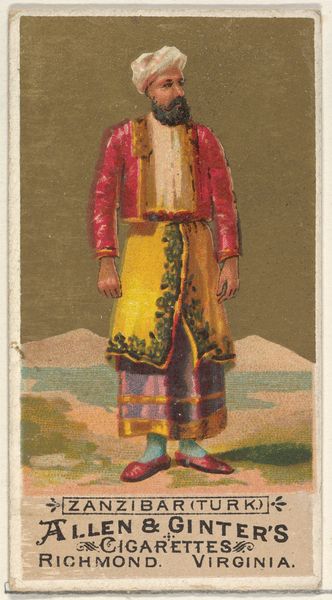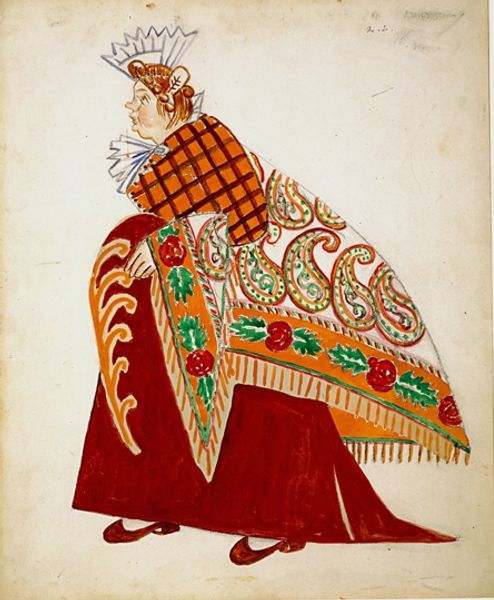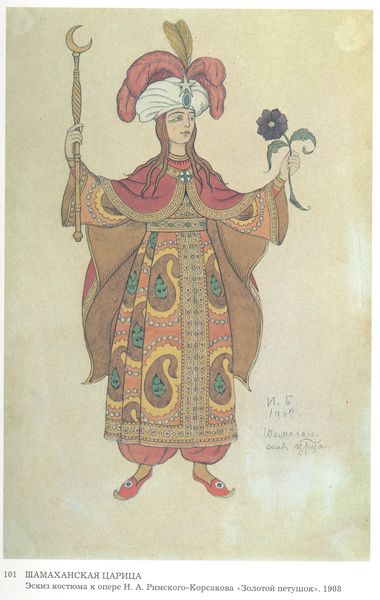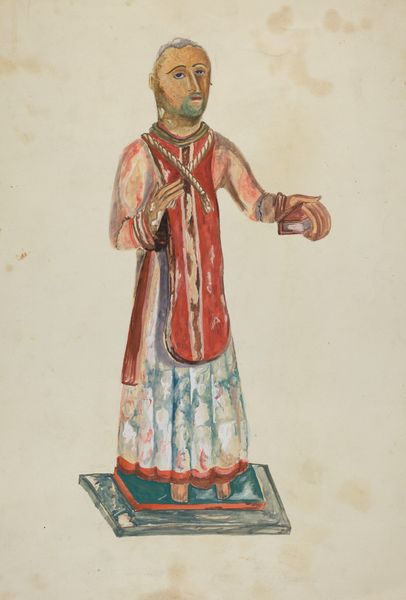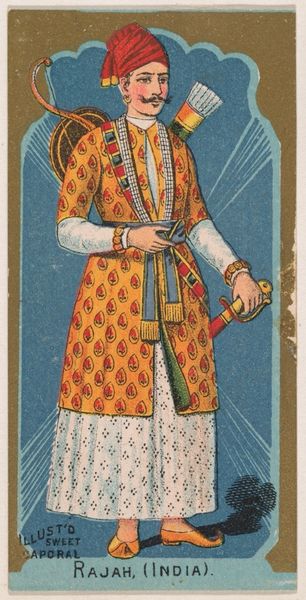
drawing, watercolor
#
portrait
#
drawing
#
water colours
#
figuration
#
watercolor
#
coloured pencil
#
orientalism
#
costume
#
line
#
symbolism
#
watercolor
Copyright: Public domain
Editor: This watercolor and colored pencil drawing by Nicholas Roerich is titled "Girl," created in 1913. There's a dreamlike quality to the figure, and her elaborate costume suggests a rich cultural background. What do you see in this piece, and how do you understand its context? Curator: I see a powerful intersection of orientalism, symbolism, and the artist's cultural roots, reflected in the costume and overall representation. Roerich was deeply invested in exploring ancient Slavic and Asian cultures, so this image participates in the artistic trend of idealizing the "exotic" East. But it also serves as a study of identity and how women's identities have been shaped, confined, and also celebrated through costume. Editor: The term 'orientalism' can be problematic, right? Does that affect how we view the artwork today? Curator: Absolutely. While the artwork clearly draws inspiration from non-Western traditions, we have to acknowledge how that gaze may perpetuate stereotypes. Ask yourself whose perspective is being privileged here. Is this truly a celebration, or is it simply another appropriation of culture? Perhaps more importantly, what does it mean to be a "girl" at that time, place, in those clothes? Editor: That's a complex question, I imagine the answer depends on each woman. Is there anything empowering that comes across, despite the objectification? Curator: The richly detailed costume, perhaps. We see her individuality being manifested and we sense power coming from these deeply held beliefs and ancestral practices. However, this strength must be critically engaged, it must allow the viewer and model to connect in an intentional way. Editor: It definitely provides a lot to consider in relation to the gaze and who dictates culture. Curator: Precisely. We must consider this not as an isolated aesthetic object but within a wider context of social and cultural representation. It challenges us to question assumptions and narratives surrounding the portrayal of "otherness." Editor: Thank you. This perspective is really helpful. I hadn't considered all of these issues. Curator: It is only through sustained dialogue and critical inquiry that we learn to engage with art's multifaceted stories.
Comments
No comments
Be the first to comment and join the conversation on the ultimate creative platform.
